10 Best Books To Help You Learn PHP
Programming or developing is a skill, and you cannot master them just by reading books. However, reading one can surely help you get started. We all work our way up from the bottom and for that to happen we must always keep ourselves in practice. I have tried my best to structure this article for beginners at web development and have chosen the books rather carefully so as not to waste your time.
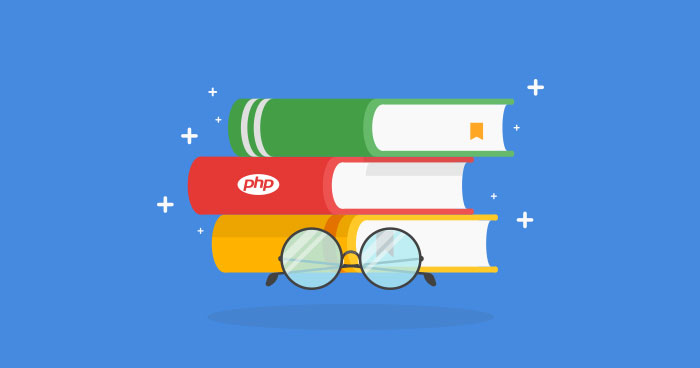
Let’s take a look at the books which will help us learn PHP and MySQL. It will help you get an idea on what those two are and how you will be dealing with some of the issues related to these languages and database.
1. The Joy of PHP Programming: A Beginner’s Guide – by Alan Forbes
The book starts with some basic HTML, so absolute beginners can catch up quickly. It then goes step by step on how PHP actually works. You start with easy stuff like how to create and run simple PHP scripts to modify web pages and then build on what you’ve learned through a series of close-knit and fun exercises.
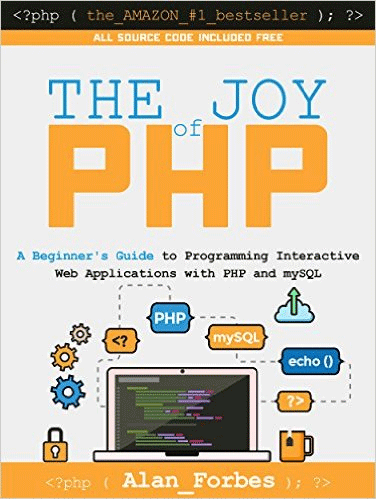
This book is not a complete solution for learning PHP, however. It takes you from being a beginner to someone who knows the sheer pride that only developing dynamic sites can provide. Sourceguardian, a PHP security plugin, has this to say about the book:
“This book should just be used as a jumping off point – but it does that job very well, and provides a great introduction to PHP and MySQL” – Sourceguardian
After completely going through this book, you can read, write, and modify PHP scripts and you will be able to make your own dynamic websites.
Topics covered in this book:
- Installing and configuring PHP
- Introduction to HTML
- Basic PHP Syntax
- Variables, Numbers, Dates and Strings
- Control Structures
- How to use MySQL Database
- Using PHP and MySQL Together
- How to create forms
- Working with Images
- PHP Quirks and Tips
- Security Considerations
2. PHP & MySQL Novice to Ninja – by Kevin Yank
No, this book will not turn you into a ninja. What this book really does is give you a solid ground on both PHP and MySQL in an easy and readable manner.
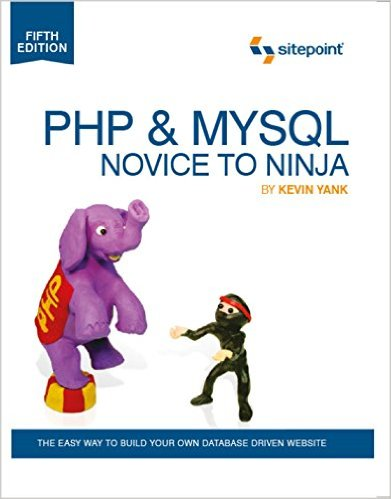
The content is as great as you would expect. Analysis of MySQL is somewhat more far-reaching than that of PHP. You do get good coverage of some of the more useful and important elements of PHP such as regular expression/session management and there is an excellent chapter on structured programming.
So is this a good book for beginners? Well, yes; it’s well written, engaging and covers the basics of PHP and MySQL pretty well.
Here are the some of the topics covered:
- Introducing PHP & MySQL
- Publishing MySQL Data on the Web
- Relational Database Design
- Structured PHP Programming
- Content Management System
- Content Formatting
- Cookies, Sessions, and Access Control
- MySQL Administration
- Advanced SQL Queries
3. Head First PHP & MySQL – by Lynn Beighley & Michael Morrison
This is the ultimate learning guide to build dynamic and database-driven websites. Encompassing real-world examples, it teaches you all the must-haves of server-side programming. From the fundamentals to advanced topics of PHP and MySQL coding, such as form validation, cookies, database queries, file I/O operations, content management, and much more, everything is covered.
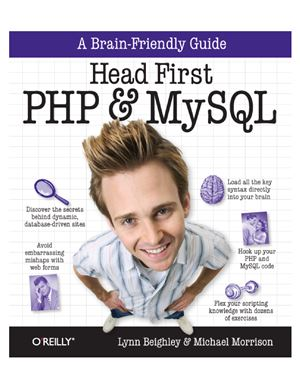
The visually rich format turns every title in the Head First series into a bestseller, with a good deal of exercises, quizzes and other bilateral features to help you cling on to the content.
Chad Warner has this to say about the book:
Chad Warner has this to say about the book:
“The book is visual and easy to understand, explaining concepts and providing practical application. Like other Head First books, it’s full of quirky pictures and cartoons.” – Chad Warner
Throughout the book you’ll build sophisticated examples which will help you learn how to harness the power of PHP and MySQL in a variety of contexts.
This is what you will learn:
- Transform HTML pages into Dynamic websites using PHP
- Create your own MySQL database tables
- Perform practical MySQL queries with joins
- Use cookies and sessions to track visitors’ login information and personalize the site for users
- Protect your data from SQL injection attacks
- Validate information on forms
- Dynamically display text based on session
- Create images on the fly
- Pull data associated with other sites
4. Learning PHP, MySQL, JavaScript, and CSS: A Step-by-Step Guide to Creating Dynamic Websites – by Robin Nixon
With this book you will quickly learn how to build interactive and data-driven websites.
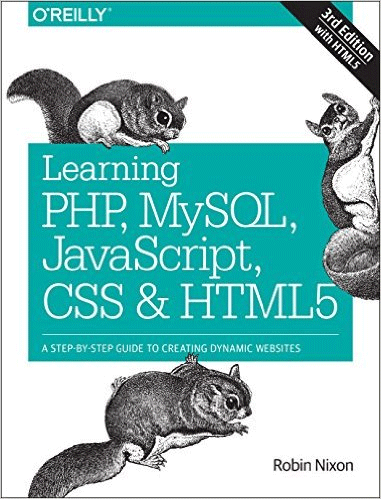
Thoughtfully paced for beginners, this is the second edition of the top-selling guide to web development. It benefits from reader reviews on the first edition, making the latest edition even easier to follow and more information-packed than ever.
Plus, you’ll practice what you have learned with the review questions at the end of each chapter, ensuring that you retain everything that you learn and there’s even a sample social networking platform built with the elements introduced in this book.
You will learn:
- Basics of object-oriented programming
- Master MySQL
- Create web pages with PHP and MySQL
- Learn about JavaScript, CSS and HTML5
- How to create compelling and dynamic web pages.
- How to manipulate CSS properties from JavaScript
- Upload and manipulate files and images
- Learn how to create a social networking site
5. PHP & MySQL Web Development – by Luke Welling & Laura Thompson
This book trains you on how to use these tools to produce effective and interactive web applications. It precisely illustrates the basics of the PHP language and explains how to set-up MySQL database. It also demonstrates how PHP interacts with the database.
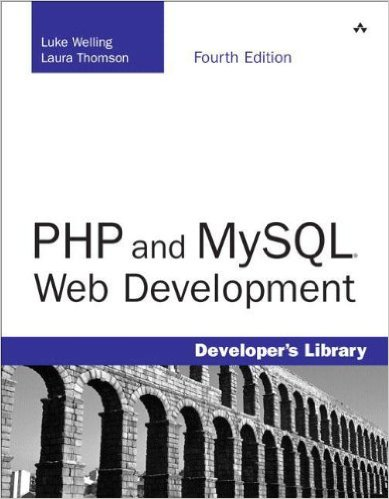
This practical hands-on book includes numerous examples that demonstrate common tasks such as authenticating users, generating PDF documents and images dynamically, sending and managing emails, connecting to web services using XML, facilitating user discussions, and developing Web 2.0 applications with Ajax-based interactivity.
You will gain knowledge and experience on:
- Crash Course PHP
- Storing and Retrieving Data
- Using Arrays
- String Manipulation and Regular Expressions
- Reusing Code
- Object-Oriented PHP
- Error and Exception Handling
- E-Commerce and Security
- Advanced PHP Techniques
- Using PHP and MySQL for Large Projects
- Debugging
6. PHP & MySQL: The Missing Manual – by Brett McLaughlin
The Missing Manual takes you to the next level in PHP by helping you create dynamic, database-driven websites with PHP and MySQL. With this book, you will learn how to manage content, build a database, and interact with users. In a blogpost about the book, Tuomo Kalliokoski had this to say:
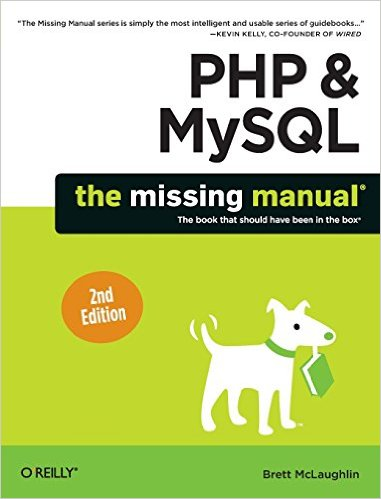
“I would say that on the database front this was one of the best presentations on the basics which I’ve encountered.” – Tuomo Kalliokoski“It’s a perfect beginning programmers book that can serve double-duty as a skimming guide for curious small business owners.” – Pierre DeBois
With step-by-step tutorials, this completely revised version gets you started with increased coverage of the basics and takes you deeper into the world of server-side programming.
Content you will learn:
- PHP & MySQL Basics
- Connecting PHP with MySQL
- How to Make Dynamic Web Pages & Web Applications
- Handling Images and Complexity
- Binary Objects and Image Loading
- Listing, Iterating and Administrating
- Authentication & Authorisation
7. PHP: A Beginner’s Guide – by Vikram Vaswani
PHP: A Beginner’s Guide shows you how to write basic PHP programs and enhance them with more advanced features such as MySQL database integration, XML input, and third-party extensions. This fast-paced tutorial provides one-stop coverage of everything including software installation, language syntax and data structures, flow control routines, built-in functions, and best practices.
This book is more than enough to give you a start and get you to an intermediate level for PHP development.
Things you will learn:
- Using Variables and Operators
- Controlling Program Flow
- Working With Arrays
- Using Functions and Classes
- Working With Data From Other Sources
- Handling Errors
- Securing and Extending PHP
8. Learn PHP & MySQL – Zero to Hero Programming Crash Course – by Paul Madoff
This book contains substantiate steps and strategies on how to use PHP with MySQL to interact with your website database. Throughout this book, you will learn the basics of using PHP and MySQL. You will find a lot of examples that can help you in speeding up your learning process in the area of web development.
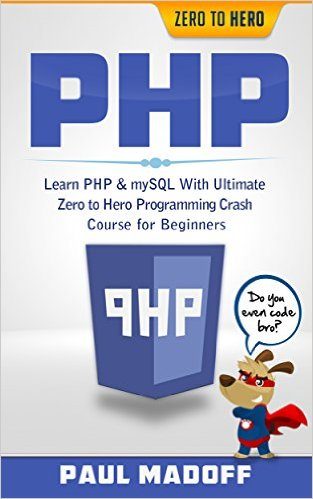
After going through this book you should be able to go on and create virtually any sort of database enabled website that you want. You will also learn some common mistakes that PHP and MySQL developers make and which you can avoid once you start writing your own scripts.
You will learn:
- Why Use a Database for Your Website
- What is PHP and How it Works
- How to Set Up a Database
- How to Display Data With PHP
- PHP Variables
- PHP Syntax
- Common PHP Mistakes to Avoid
- Useful Tips and Tricks for Using PHP Programming Language
9. Murach’s PHP & MySQL – by Joel Murach & Ray Harris
If you want to learn how to build and maintain websites that use PHP and MySQL, this book is for you. If you have some experience in programming, you’ll move through this book rather quickly. But because of its self-paced approach, this book also works for beginner programmers.
The book gets you started with PHP and MySQL as quickly as possible and then builds on your skills in a skilfull way. As Mike Riley reviews the book on Dr Dobbs, this is what he had to say:
“It effectively compresses the key amounts of information required to understand PHP programming, and competently executes a solid PHP application from scratch.” – Mike Riley
The topics covered in the book are:
- Get started fast with PHP and MySQL
- Master PHP programming
- Master MySQL Programming
- Master the Advanced skills for building websites
10. Programming PHP – by Kevin Tatroe, Peter MacIntyre & Rasmus Lerdorf “Foreword By: Michael Bourque”
This updated edition explains everything you need to know to create effective web applications. Starting with a big picture and then diving into other details like syntax, programming techniques, and using examples that illustrate both correct usage and common idioms.
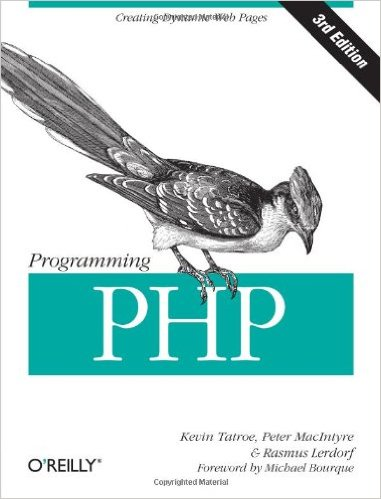
Michael Ross from Slashdot says:
“The book is the most promising single source for anyone who wishes to learn this ubiquitous web scripting language.” – Michael Ross
A reader reviews this book on his blog in the following words:
“Programming PHP, 3rd Edition is a comprehensive guidebook for learning PHP and I learned many concepts of this language effectively. I appreciate the authors very much!” – Shinobu Kawano
You will learn:
- An overview of what’s possible with PHP programs
- Learn language fundamentals
- Understand functions, strings, arrays, and objects
- How to apply common web application techniques
- Interact with relational databases
- Generate dynamic content
- Learn secure scripts, error handling, performance tuning, and other advanced topics
Never Stop Learning
All these books are for beginners who are willing to start developing websites using PHP & MySQL. Do not expect to become an expert PHP by reading these books. Nevertheless, you will get a clear understanding of how to carry PHP as a server side language and how to integrate MySQL database with it. Good luck and have fun reading!
Comments
Post a Comment